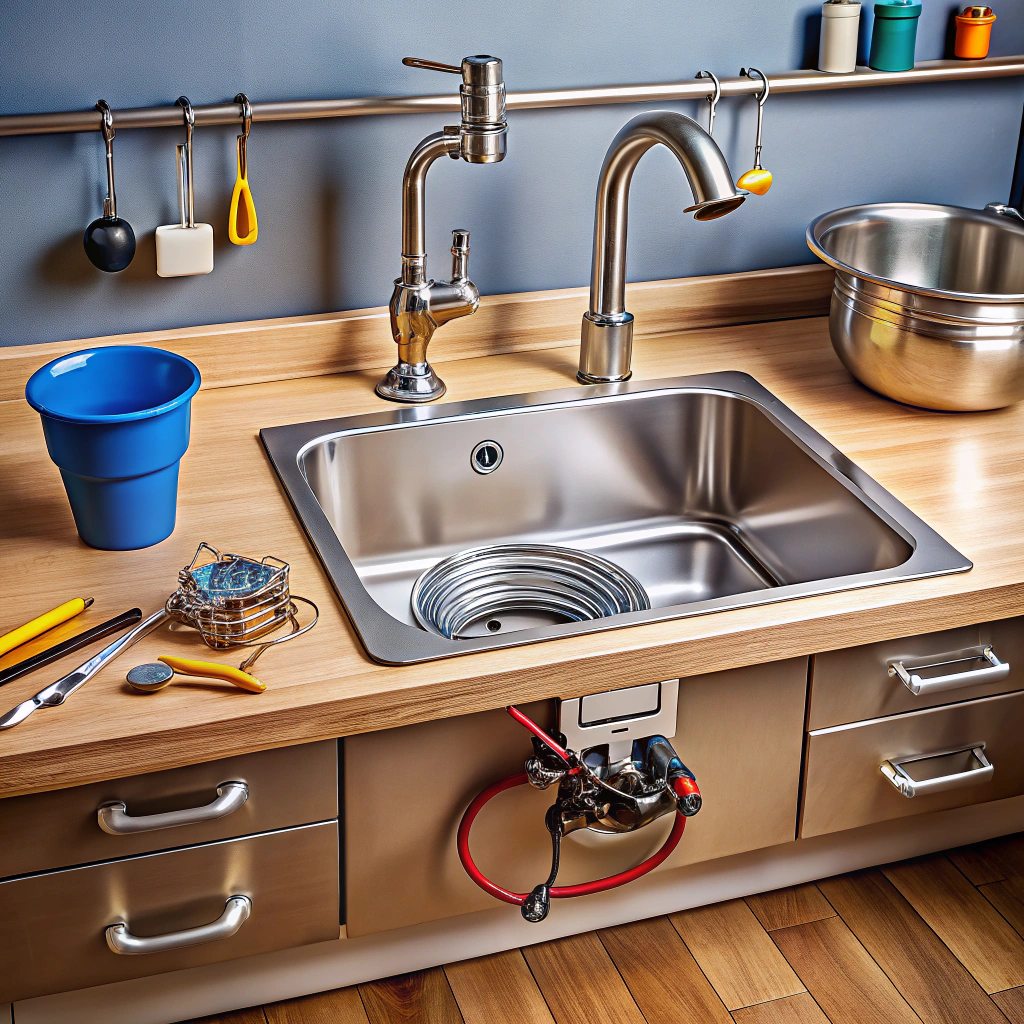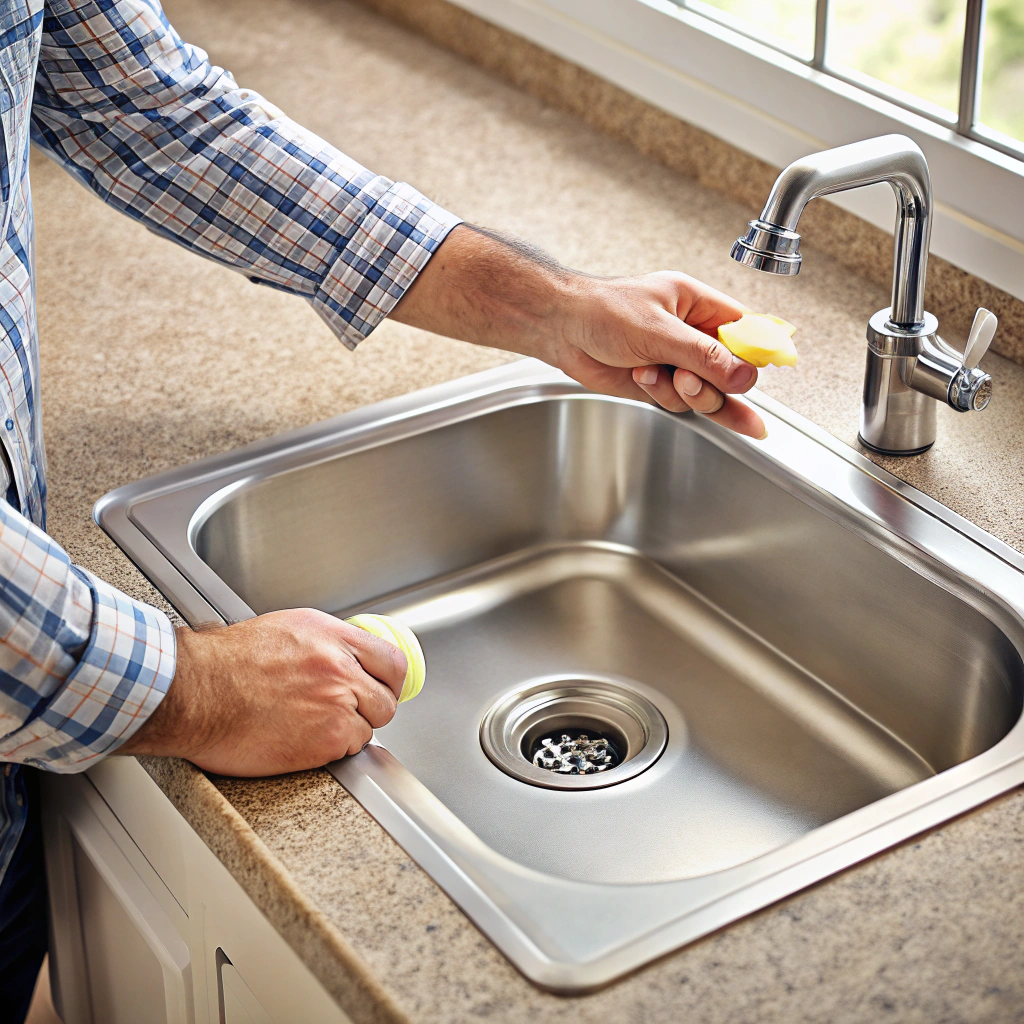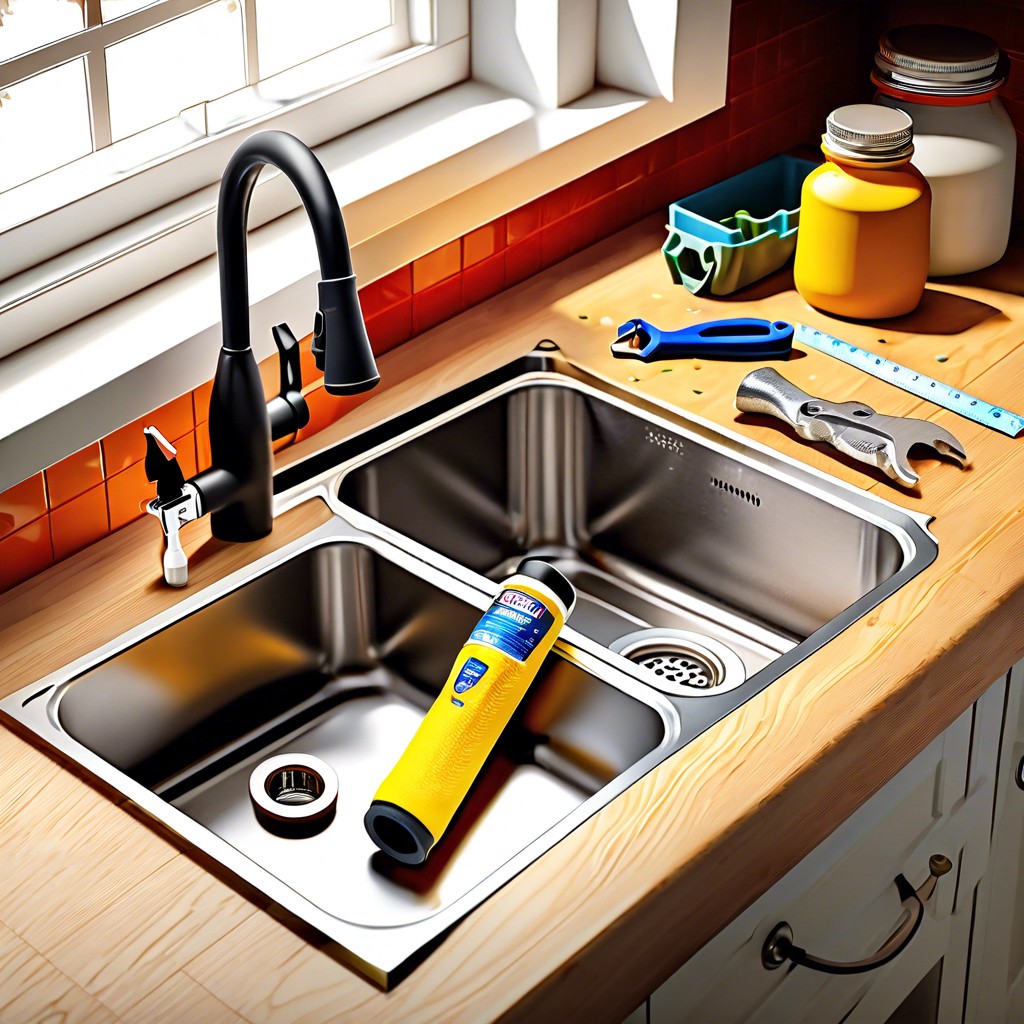Last updated on
In this blog post, you’ll learn an easy, step-by-step method to tighten a loose kitchen faucet, saving you the cost of a professional plumber’s visit.
Key takeaways:
- Identify faucet type for correct tightening method
- Gather necessary tools: adjustable wrench, basin wrench, pliers, plumber’s tape
- Follow a streamlined approach to tightening mounting nuts
- Reconnect water supply carefully and check for leaks
- Test faucet for stability, ensuring it doesn’t move or flex
What's Inside
Identifying the Type of Faucet

Distinguishing the faucet style is critical for a proper tightening process. If it’s a ball-type or cartridge faucet, the issue might lie in the handle’s setscrew, requiring just a simple Allen wrench adjustment.
For compression faucets, the process might involve tightening the packing nut or replacing the rubber washer.
In the case of a pull-out spray or a single-handle faucet, the problem often arises from loose mounting nuts under the sink.
Familiarity with your faucet’s design will enable you to target the exact location and mechanism that needs attention, ensuring an efficient fix.
Gathering Necessary Tools
Before diving into the task, it is crucial to have the right tools on hand. You’ll need an adjustable wrench, a basin wrench for those hard-to-reach spots under the sink, pliers, and possibly some plumber’s tape to secure any loose connections and prevent future leaks. Keep a flashlight nearby to illuminate the workspace under the sink.
Having everything within reach will streamline the process, allowing you to focus on the task without interruption. Remember, being prepared is the key to a smooth and successful adjustment.
Tightening the Mounting Nuts
Once you have your tools in hand and are underneath the sink, locating the mounting nuts is your next step. These are typically found right under the faucet. They secure it to the sink or countertop and can come loose over time due to frequent use or vibrations.
Here’s a streamlined approach to tightening these nuts:
- Position Yourself Comfortably: You might be spending a few minutes here, so make sure you can reach the nuts without straining your back.
- Adjustable Wrench or Basin Wrench: Choose the right tool. For those hard-to-reach places, a basin wrench is your best bet, as it’s specifically designed for tight spaces under the sink.
- Steady Hand, Gentle Turns: Apply pressure gradually, turning the nuts clockwise. Over-tightening can damage the nuts or the supply lines, so aim for firm, but not too tight.
- Secure, But Not Immovable: The nuts should be snug enough to hold the faucet in place, but remember, it’s not about testing your strength. A good rule of thumb is to tighten until you meet resistance, then give it a quarter turn more.
This simple tightening process can resolve wobbles and prevent potential water leakage caused by a loose faucet. Remember, it’s about precision, not power. A properly tightened faucet will serve you well, without the hassle of unexpected movement or water mishaps.
Reconnecting Water Supply
Once you’ve secured the faucet, it’s time to make sure everything is ready for use. Begin by gently reopening the valves under the sink to reintroduce the water supply. Turn them counter-clockwise, but be gentle—you don’t want to cause any damage or over-tighten them.
As the water starts to flow, keep an eye out for leaks. Listen for unusual noises that could signal air in the pipes. This is normal after having the supply off, and should resolve with a few minutes of flow.
Remember, the pipes may sputter initially as the air is expelled, so don’t be alarmed if the water doesn’t flow smoothly right away. Give it a moment or two. Should there be any signs of leakage, however, you’ll need to shut off the water once again to reassess the connections.
But in most cases, if the tightening process was done correctly, your faucet should be leak-free. With a watchful eye and steady hands, you’ve now restored full function to this vital kitchen tool.
Testing the Faucet for Stability
With the mounting nuts snugly fastened, it’s crucial now to ensure that your efforts have borne fruit. Gently sway the spout back and forth and side to side, feeling for any movement that shouldn’t be there.
If all feels solid, go ahead and operate the handle or lever as you normally would. Observe the base of the faucet for any motion, a sure sign that further tightening may be necessary. Keep an eye out for flexing which, if noted, means returning to the nuts for another tweak.
Don’t forget to watch the connections underneath the sink as you do this, as any shifts in the faucet could affect the integrity of the water lines. Remember, a stable faucet shouldn’t just look secure – it should feel it, casting assurance every time you reach to turn the water on.





